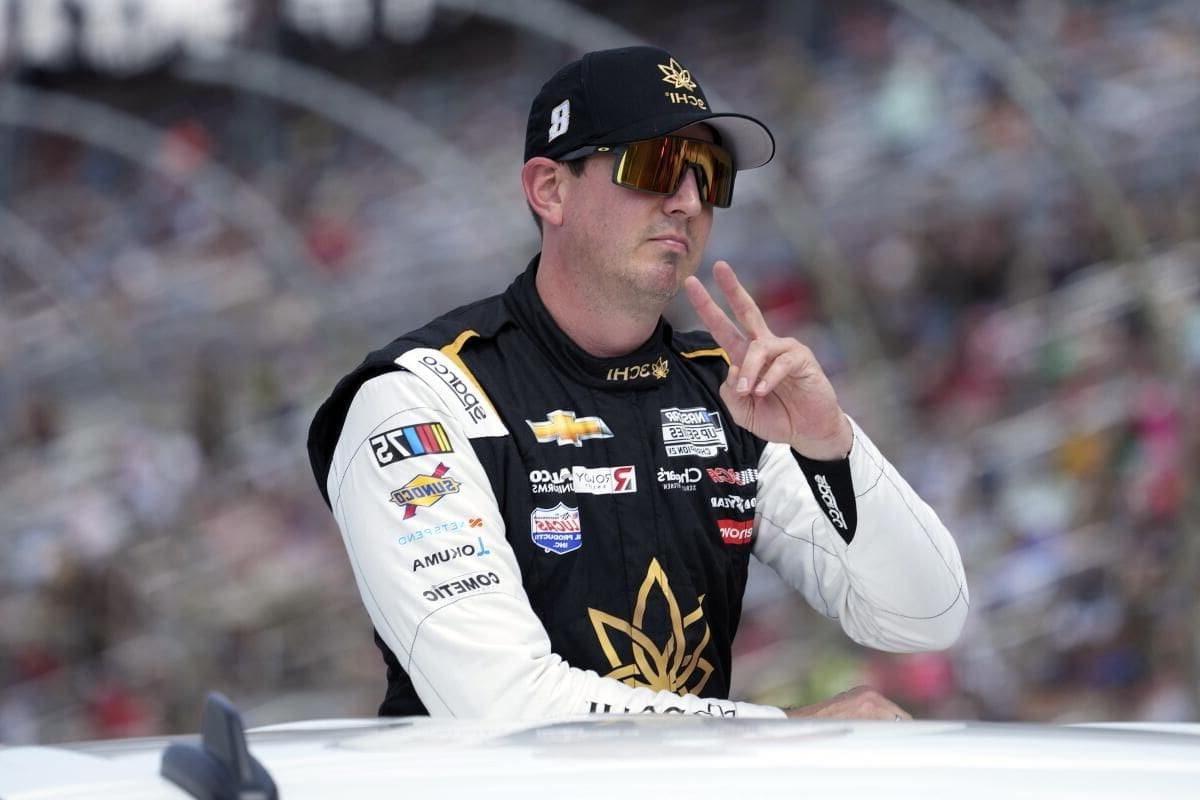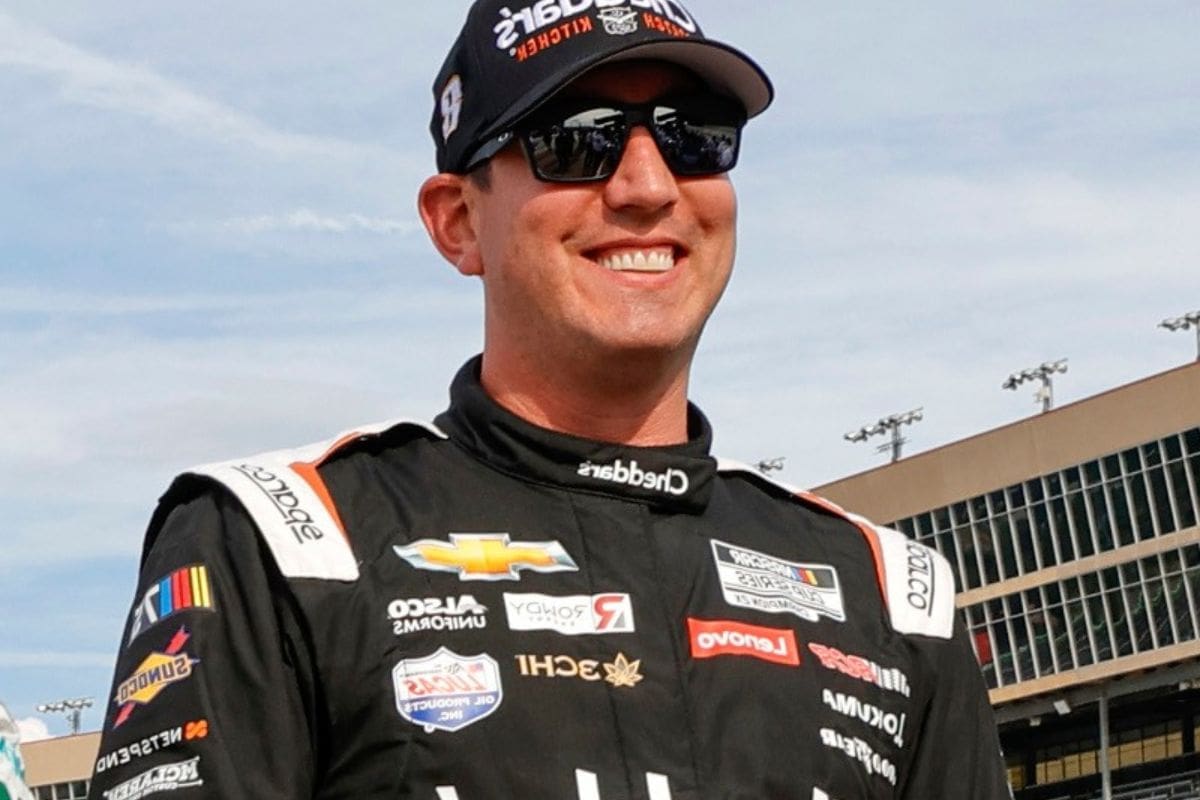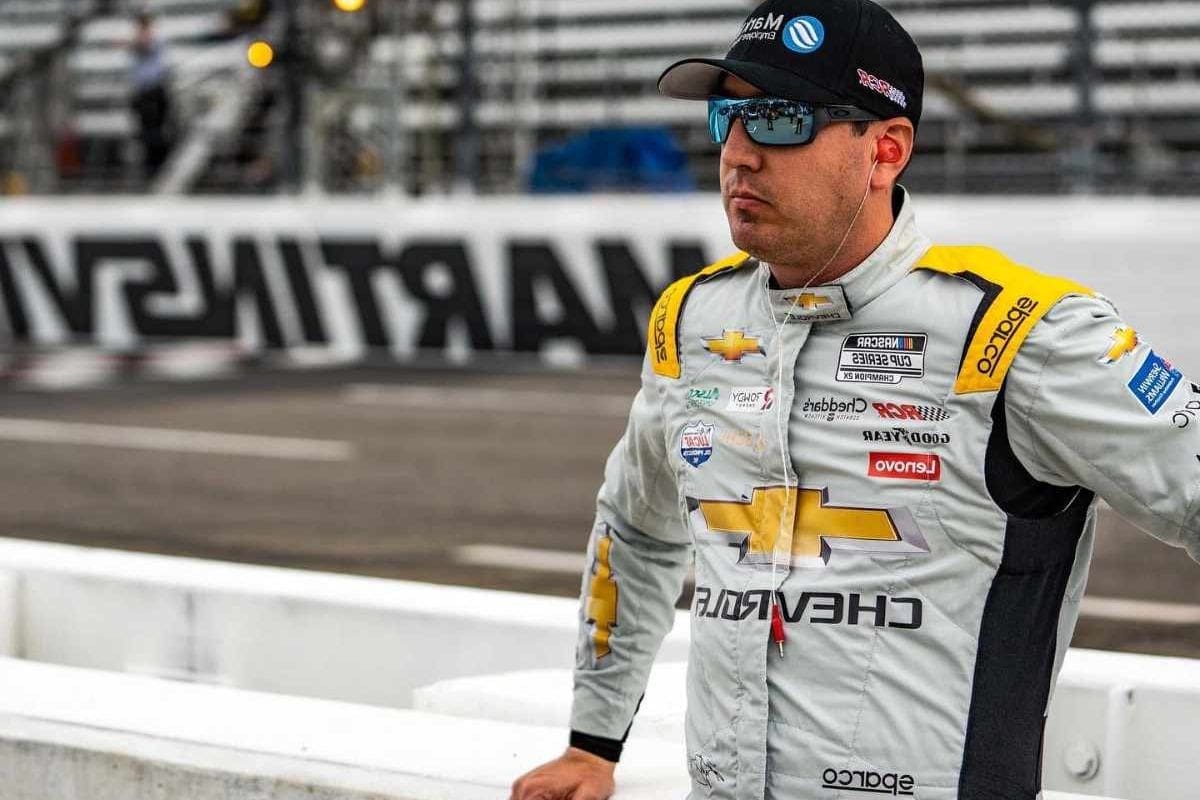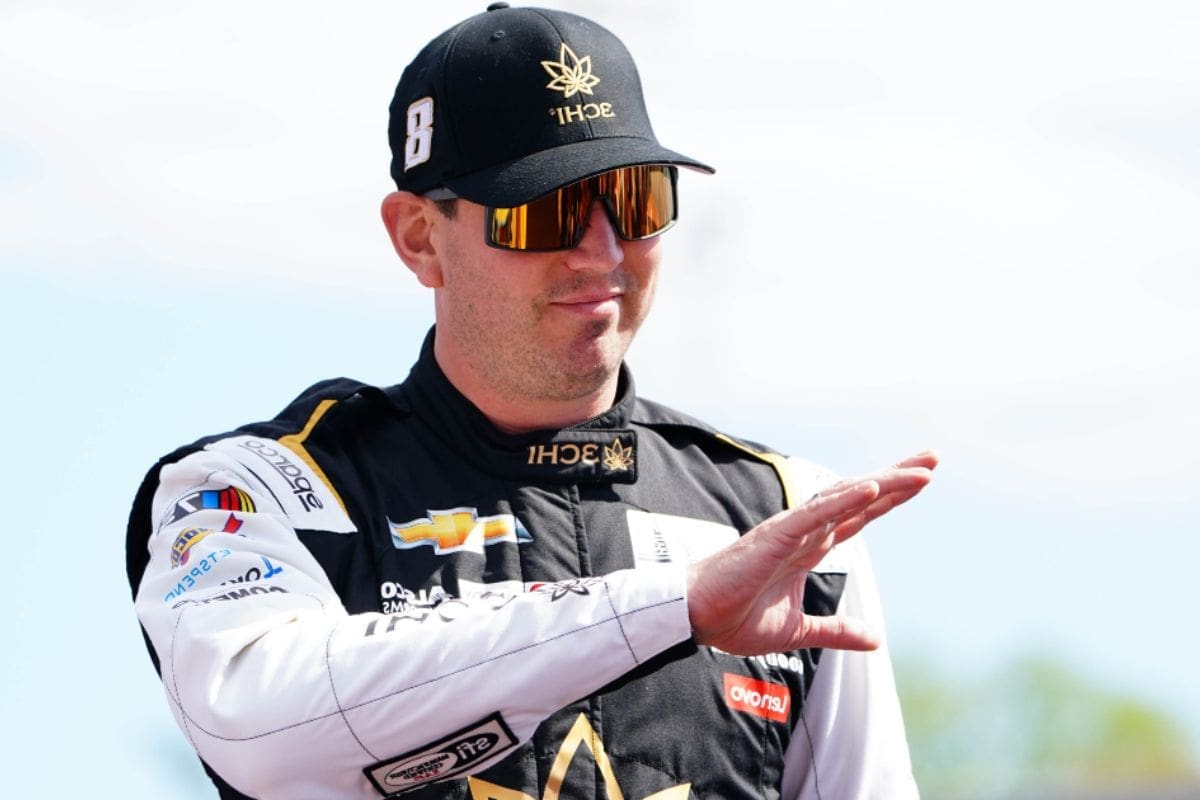Kyle Busch Worries NASCAR Parity: The landscape of NASCAR has undergone a significant shift in recent years, with the implementation of a mandatory manufacturer parts purchase policy. This policy, aimed at ensuring parity among the teams, has sparked concerns among drivers, including Kyle Busch.
As a seasoned driver with experience at Hendrick Motorsports, Busch worries that this policy may further level the playing field, making it harder for established teams to maintain their competitive edge.
In this article, we will explore Busch’s views on NASCAR’s parity measures and their potential impact on the sport. Stay tuned for an in-depth analysis of the evolving dynamics of competition in NASCAR.
Key Takeaways
- NASCAR’s mandatory manufacturer parts purchase policy aims to enhance competition and promote parity in the sport.
- Kyle Busch has voiced concerns about the increased parity and challenges in consistently performing at a high level.
- The shift in NASCAR competition dynamics emphasizes individual skill sets and adaptability under new rules.
- Busch worries that the restrictions of the policy hinder teams and drivers’ ability to stand out and showcase their talents fully.
NASCAR Implements Mandatory Manufacturer Parts Purchase Policy
NASCAR has implemented a mandatory manufacturer parts purchase policy, aiming to enhance competition among teams by promoting parity and leveling the playing field. This policy requires teams to procure most car parts from the same manufacturer, which marks a departure from past practices where car quality played a significant role in a driver’s success.
One of the primary objectives of this policy is to encourage team collaboration. By mandating the use of manufacturer parts, NASCAR hopes to foster closer relationships between teams and manufacturers. This collaboration can lead to a better understanding of the car’s performance and how it can be optimized on the track. Moreover, it allows manufacturers to align their resources and expertise to develop parts that meet the specific needs of the teams.
The performance impact of this policy is expected to be significant. With all teams relying on the same manufacturer parts, the difference in performance between teams will largely come down to driver skill and team strategy. This levels the playing field and creates a fairer competition, where victory is determined by talent rather than car superiority.
The cost implications of this policy are twofold. On one hand, it can reduce costs for teams as they no longer have to invest in developing their own parts. On the other hand, it may increase costs as teams are now required to purchase parts from specific suppliers. However, NASCAR aims to address this concern by working closely with manufacturers to ensure competitive pricing and fair supplier relationships.
Driver feedback will play a crucial role in the success of this policy. By gathering feedback from drivers, NASCAR can make informed decisions about the performance and quality of the manufacturer parts. This feedback loop allows for continuous improvement and ensures that the parts meet the demands of the drivers and teams.

Kyle Busch Voices Concerns
Kyle Busch, a two-time Cup Series champion, has voiced his concerns regarding the increased parity in NASCAR. As one of the most successful drivers in the sport, Busch’s frustrations stem from the challenges posed by the current competitive balance. In a recent interview, Busch expressed his racing frustrations, highlighting the difficulty of consistently performing at a high level in a field where every driver and team can contend for victory.
Busch reminisced about his earlier days in the Cup Series, where he often found himself competing in high-quality cars but struggling to secure wins. He believes that the increased parity in NASCAR has made it more challenging for drivers to distinguish themselves and showcase their skills. This has led to heightened driver concerns about their ability to consistently perform at a high level.
Furthermore, Busch expressed concerns about how the increased parity affects team dynamics. With every team having access to similar resources and equipment, the margin for error has become smaller, placing a greater emphasis on strategy and teamwork. This not only adds to the pressure on drivers but also requires teams to constantly adapt and find new ways to gain a competitive edge.
Busch’s Experience with Hendrick Motorsports
During his tenure at Hendrick Motorsports, Kyle Busch faced challenges on the track, feeling overshadowed by his teammates’ victories. Joining the Cup Series in 2005, Busch found himself in a top-tier team amidst their success. However, the teammate dynamics within the team proved to be a hurdle for Busch. With established drivers like Jeff Gordon and Jimmie Johnson achieving consistent wins, Busch struggled to assert himself and carve out his own place in the team.
The performance challenges Busch faced were not solely due to the skill of his teammates, but also his own personal struggles. As a young driver, he had to navigate the pressures of performing at a high level while also adapting to the demands of a competitive team environment. This combination of external and internal factors created a challenging situation for Busch.
In order to overcome these obstacles, Busch had to develop a competitive mindset. He had to find a way to channel his frustrations and use them as motivation to improve his own performance. This required a strong mental resolve and the ability to remain focused amidst the distractions and pressures of his surroundings.

Shift in Competition Dynamics
The landscape of NASCAR competition has undergone a significant transformation, with a notable increase in the number of drivers vying for victory on both regular and restrictor plate tracks. This shift in competition dynamics reflects the increasing competition within the sport, as more drivers are now capable of contending for wins.
To illustrate this change, let’s take a look at the statistics. The table below showcases the number of different race winners in the NASCAR Cup Series over the past two decades:
| Year | Number of Different Race Winners |
|---|---|
| 2000 | 17 |
| 2005 | 19 |
| 2010 | 18 |
| 2015 | 16 |
| 2020 | 13 |
As we can see, there has been a consistent trend of driver diversity and increasing competition in recent years. This shift has forced teams to adapt their strategies, as the days of dominating the competition with just a few powerhouse teams are becoming a thing of the past.
The impact of this shift goes beyond the race track. Fan reactions have been mixed, with some embracing the increased competition and unpredictability, while others long for the days of clear-cut favorites and rivalries. Additionally, this shift in competition dynamics has future implications for the sport, as NASCAR continues to evolve to meet the demands of its ever-changing fan base.
Views on NASCAR’s Parity Measures
NASCAR’s efforts to promote parity have garnered mixed reactions within the racing community. While some supporters applaud the competitive racing that it fosters, others, such as Kyle Busch, express frustration over perceived limitations and increased competition. The introduction of measures aimed at achieving racing equality and competitive balance has had a significant impact on team strategies and driver perspectives.
Fan opinions on NASCAR’s parity measures vary. Some fans appreciate the close and intense racing that these measures have brought about. They enjoy the unpredictability and the fact that any driver has the potential to win on any given race day. Others, however, argue that these measures have taken away some of the uniqueness and creativity that drivers and teams were once able to display.
From a team perspective, the pursuit of parity has forced them to adapt their strategies. With the field becoming more evenly matched, teams need to focus on finding minute advantages and refining their setups. This has made the sport even more competitive, with the smallest details potentially making the difference between winning and losing.
Driver perspectives on NASCAR’s parity measures also vary. While some drivers embrace the challenge, recognizing that it pushes them to improve and innovate, others, like Kyle Busch, feel that it restricts their ability to showcase their talents fully. Busch has voiced concerns about the limitations imposed on teams and drivers, suggesting that it hampers their ability to stand out and be creative.
Conclusion Of Kyle Busch Worries NASCAR Parity
NASCAR’s implementation of a mandatory manufacturer parts purchase policy has raised concerns among drivers like Kyle Busch.
Busch, drawing from his experience with Hendrick Motorsports, highlights the shifting dynamics in competition and expresses his views on NASCAR’s parity measures.
This development in NASCAR’s efforts to achieve greater parity in the sport has sparked discussions and debates among drivers and fans alike.

Our Reader’s Queries
Q: Why is Kyle Busch so famous?
A: Busch boasts the highest total of all-time NASCAR national series victories, securing 229 wins (63 in NASCAR Cup Series, 102 in NASCAR Xfinity Series, and 64 in NASCAR Truck Series). His impressive streak includes victories in all three NASCAR national series for ten consecutive seasons (2012-2022), and he earned the title of NASCAR Xfinity Series Rookie of the Year in 2004.
Q: Who is Kyle Busch driving for now?
A: As of 2023, Busch competes full-time in the No. 8 Chevrolet Camaro ZL1 for Richard Childress Racing in the NASCAR Cup Series and also participates part-time
Q: Who is the richest NASCAR driver?
A: As the richest and most popular NASCAR driver, Dale Earnhardt Jr. boasts an impressive net worth of $300 million.
Q: Is Kyle Busch a Millionaire?
A:Kyle Busch, the accomplished stock car racing driver, possesses a net worth of $80 million. His wealth is derived from diverse channels, encompassing racing earnings, endorsements, and strategic investments. Busch’s annual salary fluctuates between $16-19 million, playing a substantial role in accumulating his impressive net worth.
Q. How much is Kyle Busch worth in 2023?
A. Here are some key details about NASCAR driver Kyle Busch:
- Sibling: Kyle Busch’s older brother is Kurt Busch.
- Net Worth: Kyle Busch’s estimated net worth is $80 million.
- Salary: He earns a salary of $16.9 million.
Also read: Kyle Busch’s Bold Claim: Daytona Win Won’t Define Career!

